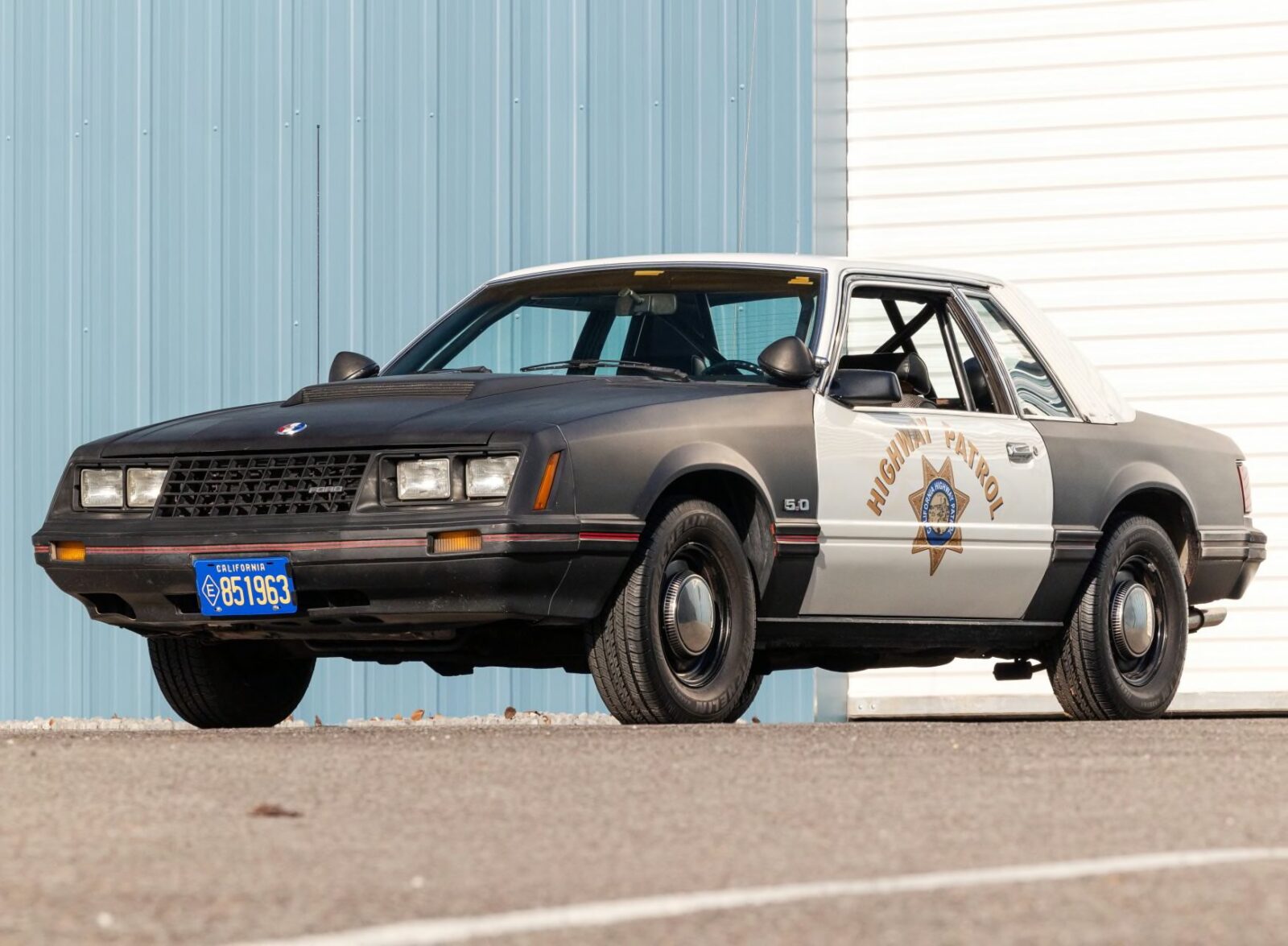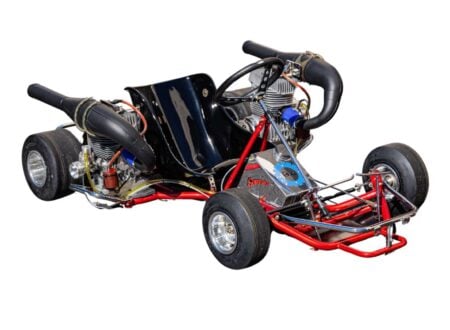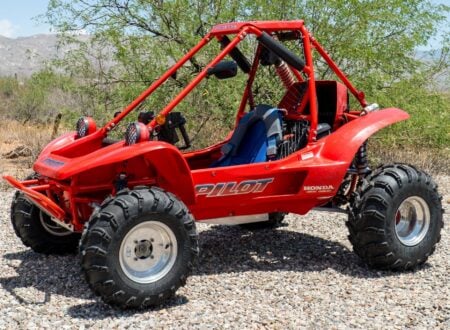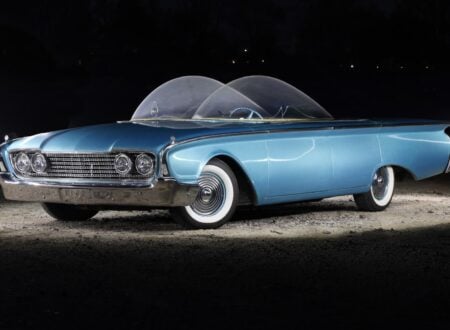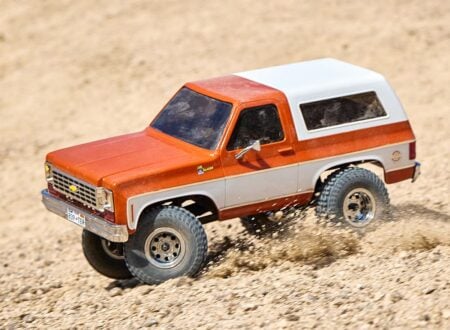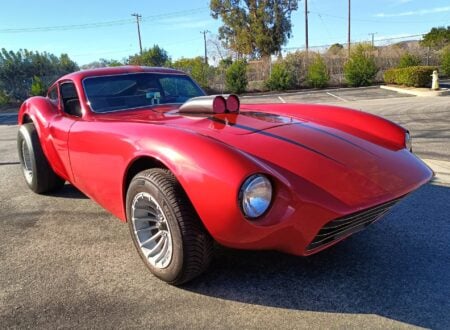This is one of the first Ford Mustang SSP prototypes, it was developed by Ford at the request of the California Highway Patrol as a faster, lighter, more compact police vehicle better suited to high-speed pursuits that the Crown Victoria.
Once this prototype’s research and development was completed it became the very first Emergency Vehicle Operators Course (EVOC) car. This course teaches high-speed emergency driving techniques to law enforcement personnel. The car is now being offered for sale by Mecum at their Kissimmee 2024 Auction.
Fast Facts – The Ford Mustang SSP
- The Ford Mustang SSP (Special Service Package) was introduced in 1982 as a response to the need for a more capable and high-performance police vehicle. Ford chose to use the Mustang platform, creating a version of the car that could handle the rigors of police work, specifically high-speed pursuits.
- Ford modified the standard Mustang with several key upgrades to meet high-speed pursuit requirements. These included a heavy duty suspension system, upgraded cooling systems for the engine and transmission, and reinforced floor pans for improved rigidity. The SSP used the 5.0 liter V8 engine which was mated to either a 5-speed manual or an automatic transmission.
- The Mustang SSP quickly became popular with law enforcement agencies across the United States, including state police and federal agencies. Its most notable early adopter was the California Highway Patrol (CHP), which used the Mustang SSP extensively for highway patrol duties.
- The Mustang SSP developed a cult following among car enthusiasts and collectors due to its unique role and specialized modifications. It stands out as a notable variant of the Fox Body Mustang line. Today they’re considered highly collectible and their prices are on the rise.
The Ford Mustang SSP – Special Service Package
The Ford Mustang SSP was one of the more interesting variants of the Fox Body Mustang, if not the most interesting outright. It was used across the United States by both federal and local law enforcement including the FBI, DEA, the California Highway Patrol, and the New York State Police – in total it would be used by over 60 law enforcement organizations and government agencies.
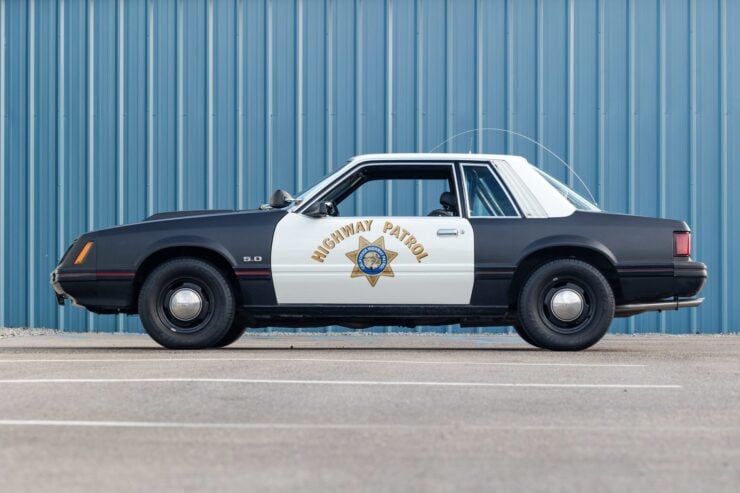

The SSP (Special Service Package) was originally developed by Ford for the CHP (California Highway Patrol) in 1982. The CHP had approached the automaker with a request for a vehicle that would be better suited to high-speed pursuits than the likes of the Ford Fairmont and LTD/Crown Victoria which were commonly used by law enforcement.
Ford engineers chose the still-new Fox Body Mustang as the platform and set to work making it better suited to the rigors of police work. They took the Fox Body unibody shell and strengthened it for better rigidity by reinforcing the floor pan.
They equipped the SSP with the 5.0 liter H.O. V8 which was given an engine oil cooler, silicone radiator hoses and aircraft-style clamps, and a transmission cooler – all to ensure it could withstand regular, prolonged high speed operation.
Additional changes for police duties included the fitment of 130 and 135 amp internally and externally regulated heavy duty alternators, a two-piece VASCAR speedometer cable, a certified calibrated speedometer, and a full-sized spare tire.
When Ford was advertising the SSP to government agencies and law enforcement operators they famously used the tagline: “This Ford chases Porsches for a living…”
Once testing was complete, 406 Mustang SSPs were ordered by the California Highway Patrol and they were put to work immediately right across the state. Many other law enforcement orders were placed for the SSP, many with their own minor changes to suit local conditions or preferences.
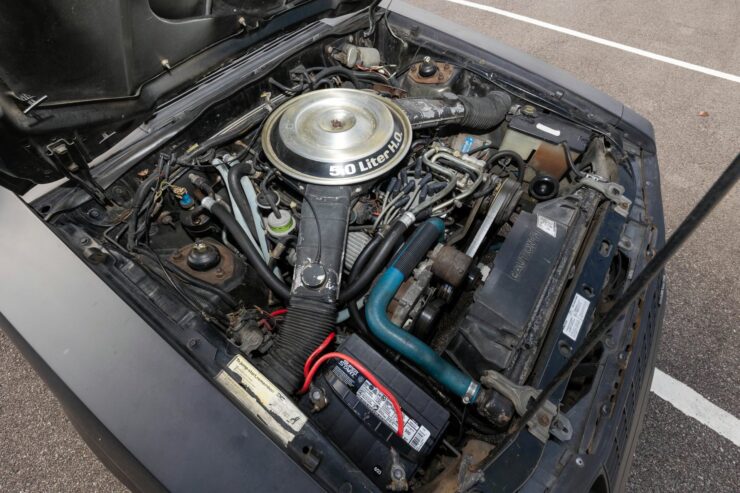

Ford kept the SSP in production from 1982 until 1993, they sold over 15,000 across the United States, and amazingly some of them remain in active service to the current day. Others are now being used as part of DARE programs and promotional display cars.
Interestingly, a number of former SSP cars were bought at auction by enthusiasts after they were sold on from law enforcement use and used for drag racing. The stiffer bodyshell and other upgrades made the cars ideal for drag racing, and the 5.0 liter V8 has significant aftermarket support for performance parts.
The Lockheed U-2 Chase Cars
One of the most interesting uses of the SSP was as a chase car for the Lockheed U-2 spy plane. Landing the U-2 was a famously difficult operation due to its design, and it was necessary for another U-2 pilot to follow the plane as it made its way down the runway to give instructions to the active pilot on keeping the wings level and the aircraft on track.
The USAF had been using specially prepared Chevrolet El Caminos as chase cars for years, but in 1986 they began looking for a replacement. As the story goes, personnel at Beale Air Force Base asked their local California Highway Patrol officers to provide them with a Mustang SSP for testing.


Unsurprisingly, CHP agreed to the request, and the SSP quickly proved itself to be vastly superior to the El Camino. The USAF ordered 20 SSPs for their own use, some of which were stationed at USAF bases in overseas locations.
The 1982 Ford Mustang SSP Prototype Shown Here
The car you see here is doubtless one of the most important Mustang SSPs ever made, it’s one of the first prototypes from 1982. It differs from the later “production” SSPs in a few key ways, for example, the antenna is on the passenger side whereas CHP patrol cars had the antenna on the driver’s side.
Once its testing was completed this SSP was sent to the Emergency Vehicle Operators Course (EVOC) where it became the very first vehicle in the fleet. It’s now been used by countless law enforcement personnel over the years to learn the finer points of high-speed driving.
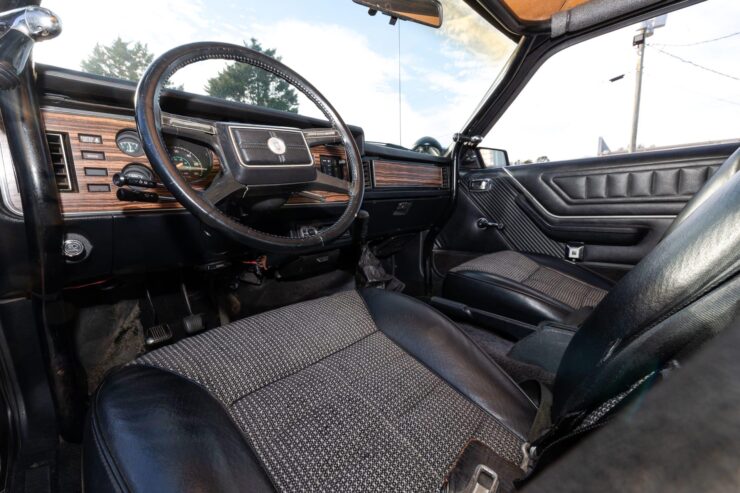

The car is now being offered for sale by Mecum in January at their Kissimmee Auction. it comes with a Certificate of Affidavit, Deluxe Marti report, an Eminger report, vintage photos and a magazine article detailing the history of the vehicle.
The price guide on this car is $100,000 – $125,000 USD and you can visit the listing here if you’d like to read more about it or register to bid.
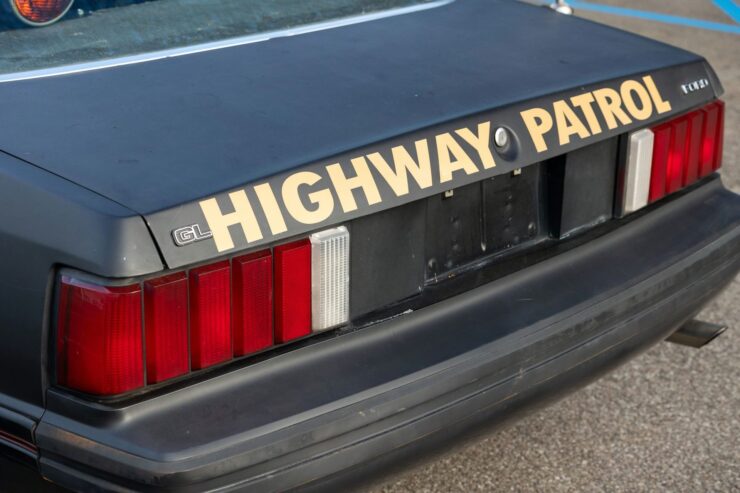
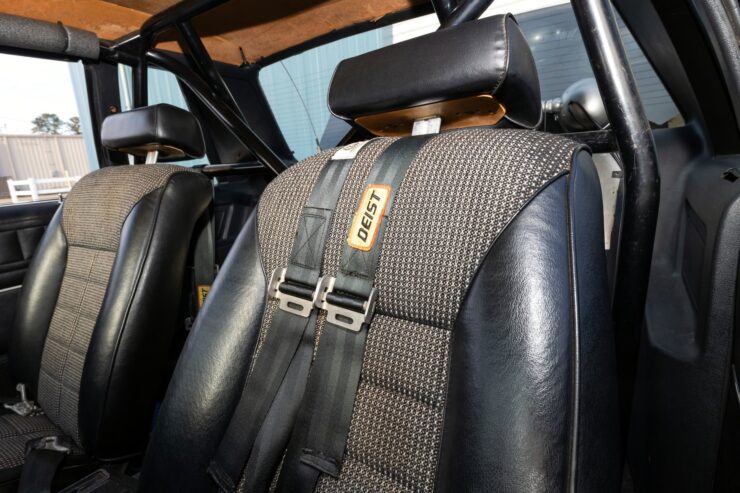
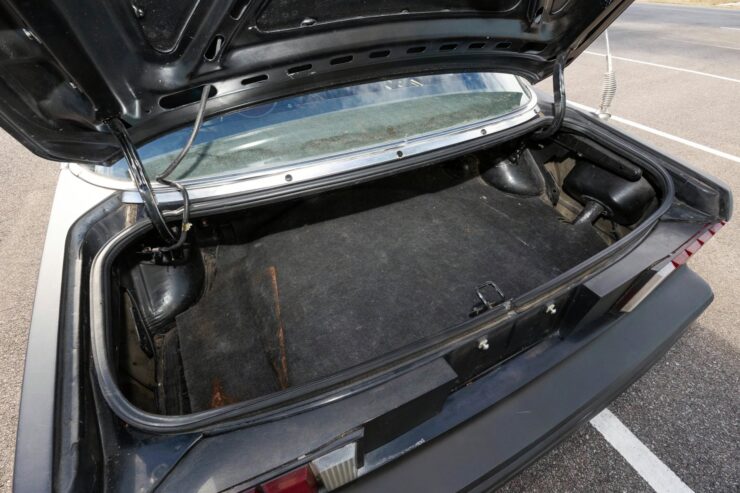
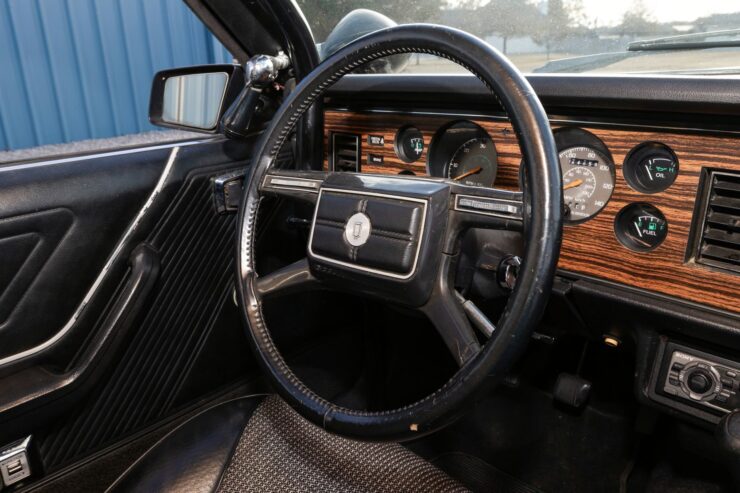
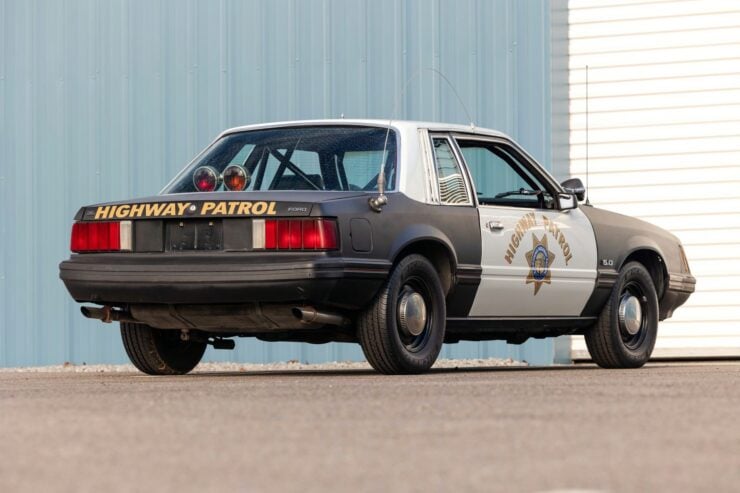
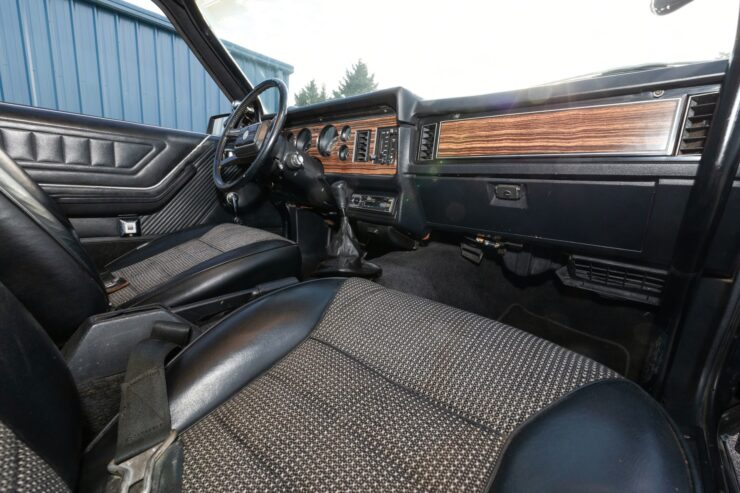
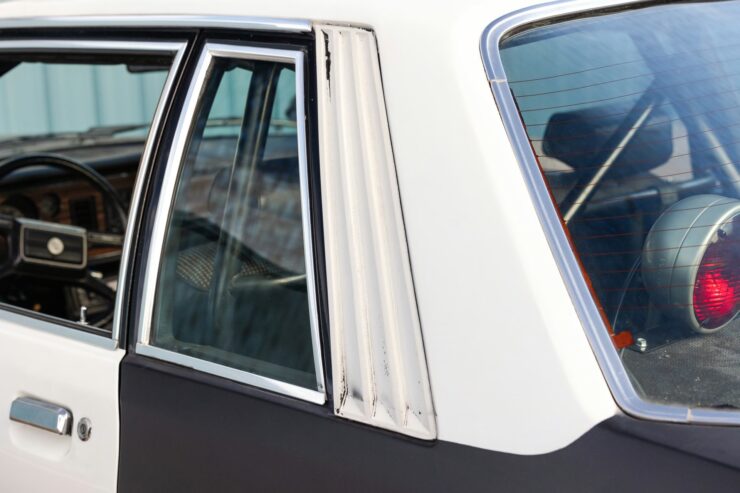
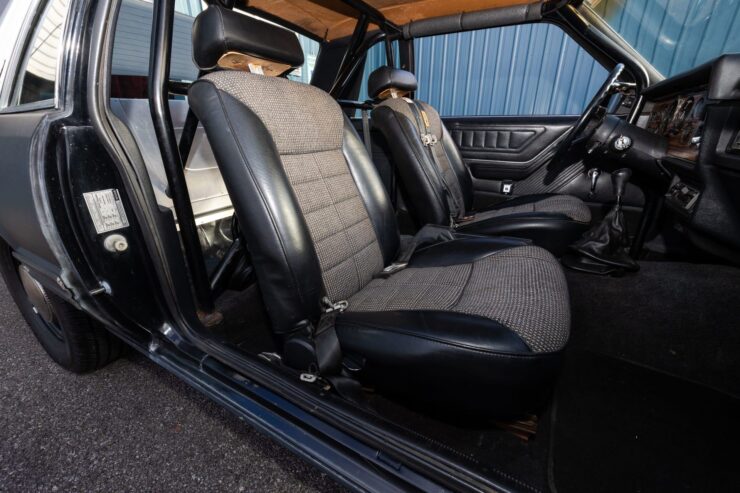
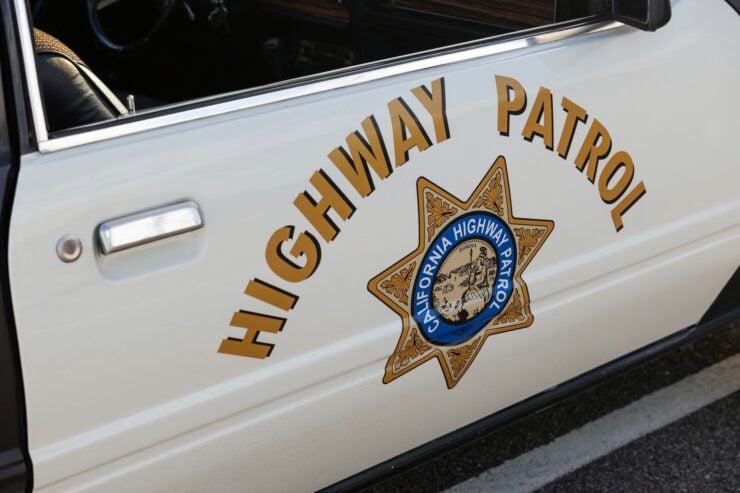
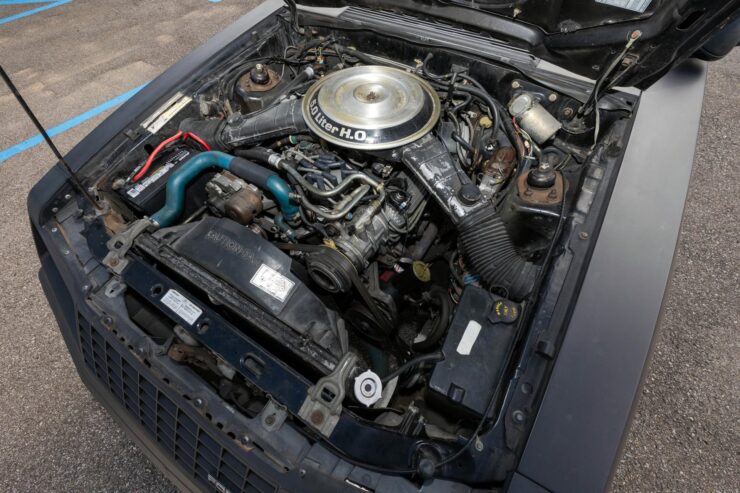
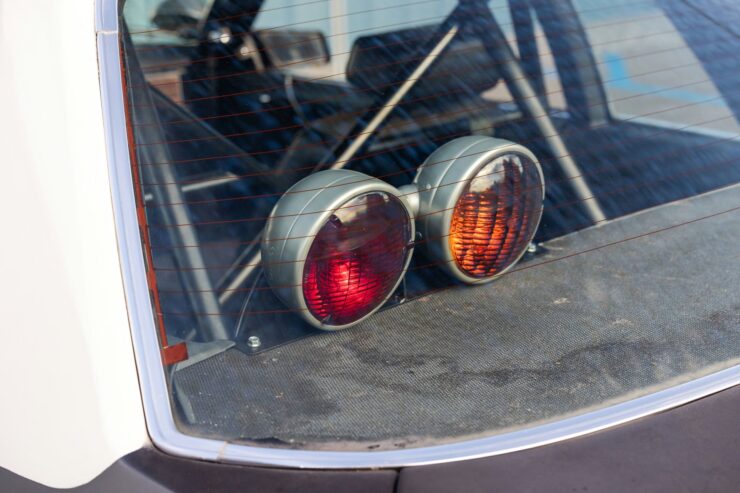
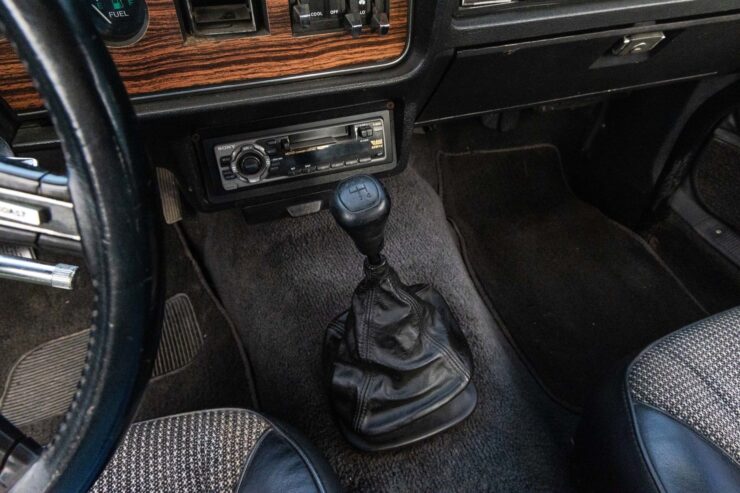
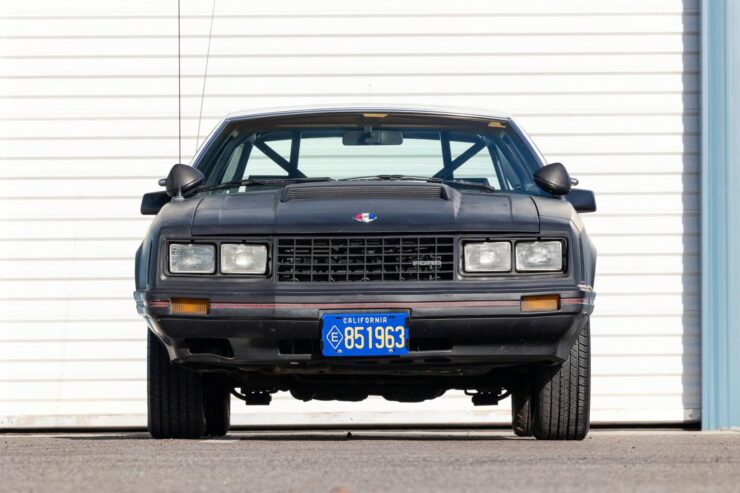
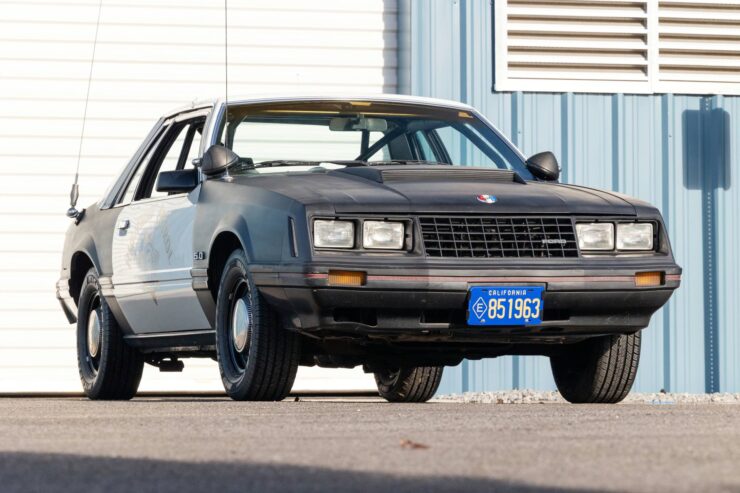
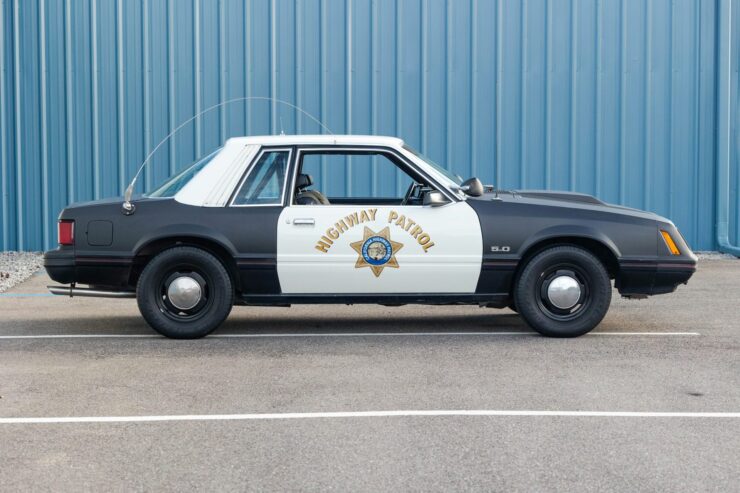
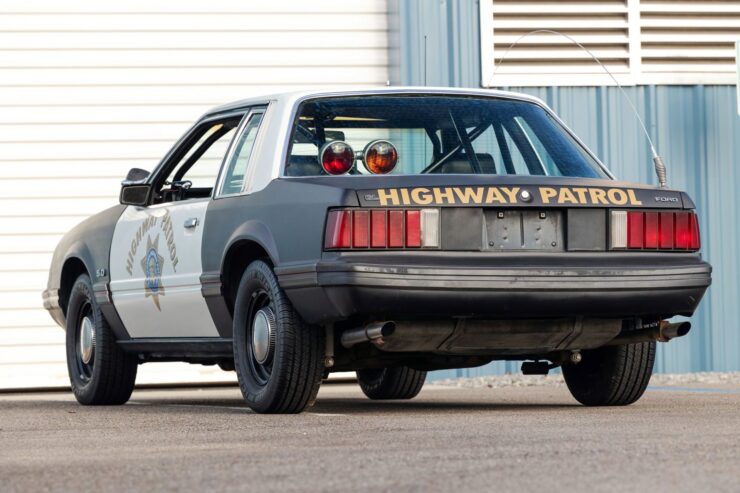
Images courtesy of Mecum

